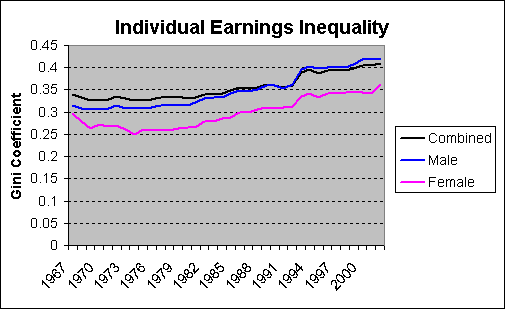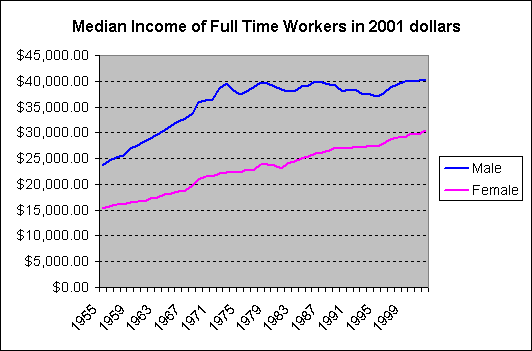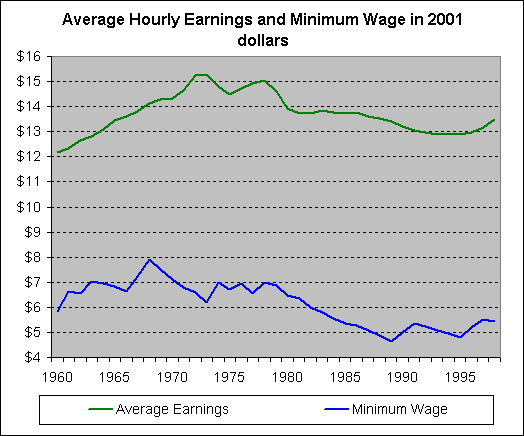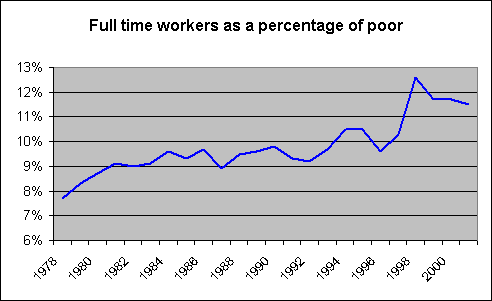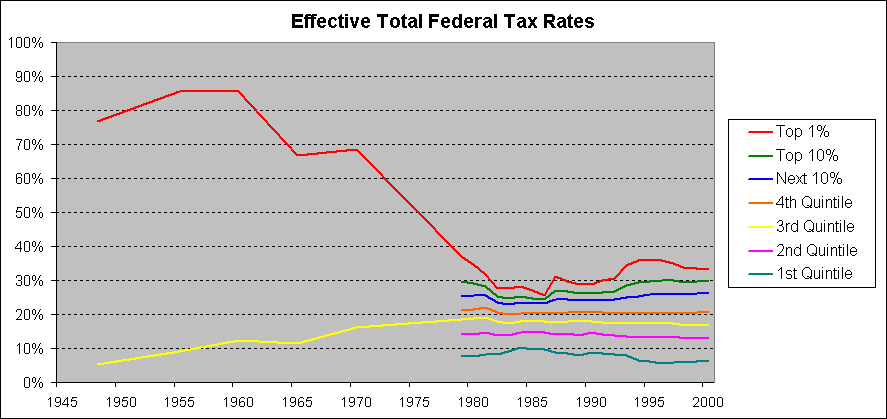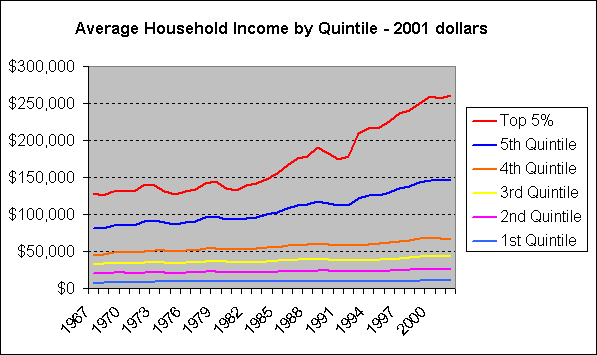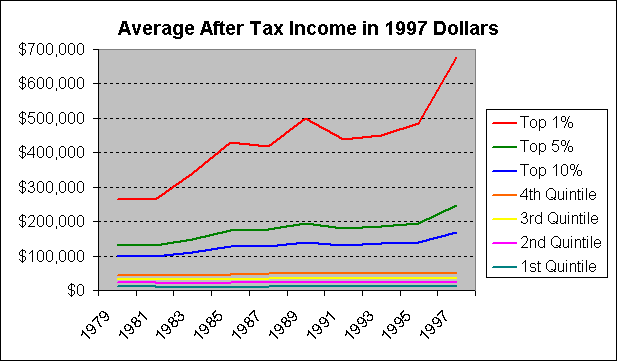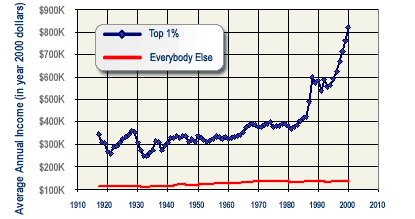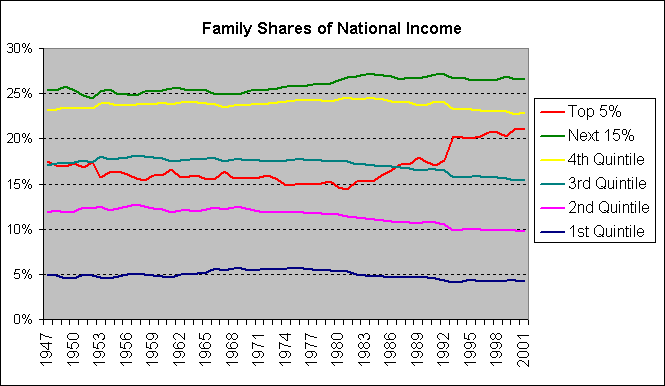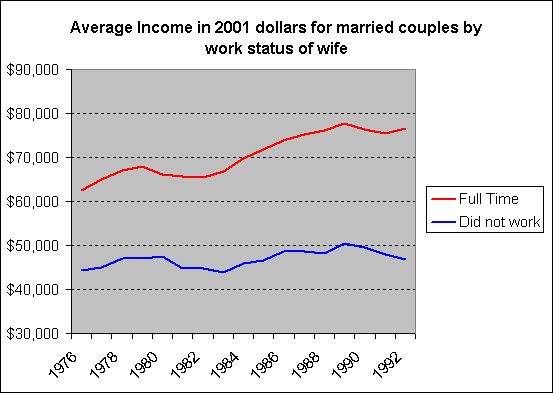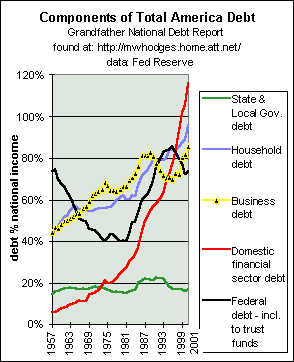The Campaign Against Medicare

Many of the same arguments used against Medicare (a successful program) are still in use against healthcare reform legislation today.
With Reagan’s 1961-62 campaign against Medicare, a symbolic line was crossed, the line separating business booster from political operative.Beginning in 1952 the Truman Administration, through Federal Security Administrator Oscar Ewing, had begun advocating medical care for the aged—what would become Medicare. This was a retreat from Truman’s earlier calls for universal health care for all Americans. The implacable opposition of the AMA and other pressure groups made universal health care an impossible goal. By scaling back the ambition of the health care plan to encompass only aged Americans receiving Social Security, the Truman Administration hoped to mollify the conservative opposition.
In 1952 the first bill was introduced in Congress to create a Medicare program. The AMA immediately announced its opposition and worked tirelessly and successfully to prevent any such program from advancing in the Congress.
In 1958 the debate over Medicare acquired new intensity as Congressman Aime Forand (D-RI) introduced a bill in the Ways and Means Committee that was drafted by the Medicare-advocates who, in 1965, would play key roles in the eventual enactment of the legislation. The Forand bill was the most serious effort to introduce Medicare, and the AMA mobilized a massive campaign against it, quintupling its lobbying budget to fight Forand. Ultimately, Forand’s bill was bottled-up within the House Ways and Means Committee, but its popularity with both politicians and some segments of the public (labor united behind the idea of Medicare for the first time for example) gave the AMA a real scare.
By 1960 the two groups had been at loggerheads for nearly a decade and a compromise to the conflict was proposed by Senator Robert Kerr (D-OK) and Representative Wilbur Mills (D-AR). The Kerr-Mills bill—which like the Forand bill was also drafted in part by Medicare-advocate Wilbur Cohen—sought to substitute for a federal Medicare program covering aged Social Security beneficiaries, a state-based welfare program covering only the medically indigent and the aged on state welfare rolls. This scaled-back scheme was enacted into law in September 1960.
The Kerr-Mills plan had important differences from Medicare. First, it was a welfare benefit, limited in its scope to those able to demonstrate lack of financial means. Second, the programs would be state-based, rather than federal. But most importantly, the program would be entirely optional for the states. If a state chose not to construct a health care program under Kerr-Mills, they were free to ignore the law. Senator Pat McNamara (D-Mich.)—who was an opponent of Kerr-Mills—complained at the time, “The blunt truth is that it would be the miracle of the century if all of the states—or even a sizeable number—would be in a position to provide the matching funds to make the program more than just a plan on paper.”17
On its face, Kerr-Mills had the potential to be more generous in some ways than a Medicare-type program. At the time, there were 2.4 million seniors receiving state old-age assistance, and an estimated 10 million medically indigent who were not on state welfare rolls but who were unable to pay their own medical bills. Some or all of this population might be covered, depending upon the decisions of the individual states. This contrasted with the 14 million Social Security beneficiaries at the time. So in terms of scope, Kerr-Mills was likely to be a somewhat smaller program. But in terms of types of services, and the generosity of coverage, Kerr-Mills was virtually unlimited, with the federal government pledging to pay from 50% to 80% of the costs of whatever programs the various states created. But 50-80% of nothing is still nothing; so if a state failed to create a program—or created a very stingy one (as is typical for welfare benefits)—the theoretical federal support would be likely to not come to very much. Indeed, by 1963 there were still 18 states which had never implemented Kerr-Mills, three years after the legislation was enacted, and five large industrial states with only 32% of the medically-indigent were receiving nearly 90% of the federal funds expended under the program.18
Initially, even this truncated approach to social provision was bitterly resisted by the AMA. If Truman’s universal health care plan was socialism through and through; the scaled-back Medicare proposals were just socialism’s foot in the door; and even a Kerr-Mills program would just be socialism-lite. But finally, the AMA bowed to political realities and dropped its opposition to Kerr-Mills.
At this point, in 1961-62, Kerr-Mills was the AMA’s fall-back position in its continued opposition to Medicare legislation. The AMA’s argument was that Medicare was unnecessary because Kerr-Mills was a sufficient solution to the problem of medical care for the elderly. Given the limitations of Kerr-Mills, it is not surprising that the program failed to accomplish very much in the five years before it was repealed. A cynic might suspect that failure to accomplish very much was probably just what the AMA hoped for.
In the subsequent political battles over Medicare, the AMA would deploy an alternative strategy, rather than relying on support of the Kerr-Mills legislation. Following the 1964 presidential election, the AMA developed an alternative to Medicare which they labeled “Eldercare.” This scheme was essentially Kerr-Mills on steroids. It promised much more generous benefits than Medicare, but again limited to only the welfare population rather than to all aged Social Security beneficiaries.
In any case, the passage of Kerr-Mills in 1960 did not end the pressure for a Medicare program—as the conservatives and the AMA wished and hoped. After all, the non-indigent elderly were still in need of health care coverage and still unlikely to be able to purchase it in the marketplace. Studies at the time reported that the aged used medical services at a rate twice that of the non-aged; that three-fifths of the aged had less than $1,000 in liquid assets; and that nearly 54% of the aged lacked any form of health insurance. While opponents of Medicare disputed the precise statistics, it was clear to virtually everyone that the aged had medical-care problems that far exceeded those of the average American.
Following the defeat of the Forand bill, and the election of John Kennedy in November 1960, Medicare’s backers crafted a new version of the legislation, introduced by Clinton Anderson (D-NM) in the Senate and Cecil King (D-CA) in the House. The bill had the President’s backing and thus had acquired a sudden new dimension of political heft missing during the Eisenhower years. The AMA was thus understandably panicked by the appearance of the King-Anderson bill, after having tried to compromise Medicare out of existence with the Kerr-Mills strategy.
King-Anderson was, in terms of the Medicare program we know today, half-Medicare. It proposed to cover the costs of hospital and nursing home care, but not surgical costs and not out-patient physicians’ services. In this respect, it was scaled-back slightly from the Forand bill, which in addition offered coverage of surgical expenses. This scaling-back was a futile effort to lessen resistance to the idea of government-provided health insurance coverage.
So as 1961 dawned, the Kerr-Mills bill was established law, and the first King-Anderson legislation was pending in the Congress. The election of John F. Kennedy added new pressure to the push for King-Anderson and advocates for Medicare were optimistic that the 1961-62 session of Congress would see increased pressure for the enactment of Medicare in the form of the King-Anderson bill. Medicare was by no means a done-deal in 1961-62, even absent the AMA campaign against it. But the AMA campaign was a significant force of opposition striving to block Medicare during this period.
It is important to bear this history in mind when considering Operation Coffeecup, and Reagan’s subsequent positioning on Medicare, because it is this history that Reagan was to mythologize.
Coffee-Klatch Politics
The Woman’s [sic] Auxiliary of the AMA was an affiliated organization composed primarily of the wives of member physicians. Its 82,000 members in 1961 undertook a variety of educational, charitable, community service, and public relations tasks on behalf of the AMA. In the Spring of 1961, the Woman’s Auxiliary was asked to launch a special high-priority initiative under the title of WHAM, Women Help American Medicine. The avowed aim of WHAM was bluntly stated as: “This campaign is aimed at the defeat of the King-Anderson bill of the 87 th Congress, a bill which would provide a system of socialized medicine for our senior citizens and seriously curtail the quality of medical care in the United States.”19The WHAM campaign officially kicked-off with a rally in Indianapolis on December 5, 1961 before an audience of 70 state Auxiliary women and 20 doctors, who were serving as WHAM advisers in Indiana. Within a month, WHAM state-rallies had been held in Illinois, Florida, Texas and Minnesota, with others scheduled for North Dakota, Pennsylvania, Wisconsin, Tennessee and Kentucky during February.
The AMA’s campaign against the King-Anderson version of Medicare was a complex, extensive, and well-financed lobbying tour-de-force. Many aspects of the WHAM campaign were very public and visible. The AMA placed advertisements in major newspapers and funded radio and television spots, all deploying the usual red-brush of “socialism,” and even the specter of jack-booted federal bureaucrats violating “the privacy of the examination room.”
The grass-roots efforts were even more extensive. Under the banner of “Operation Hometown” the AMA enlisted local medical societies to propagandize against King-Anderson. Speeches, reprints of articles, pamphlets on the dangers of “socialized medicine,” news releases, and even a High School Debate Kit, were all provided to local physicians to assist in the campaign.
These were the public face of the campaign, the very visible components of the AMA’s overall strategy. But there was also a more-stealthy component to the campaign, one that depended for its success on its sponsorship and origins being hidden from the members of Congress who would be lobbied under its aegis. This was Operation Cofffeecup.
The idea behind Operation Coffeecup, as the name hints, was to arrange a series of coffee-klatches hosted by the members of the Woman’s Auxiliary. The Auxiliary members receiving the Operation Coffeecup materials were instructed to downplay the purpose of the get-to-gathers, depicting them as sort of spontaneous neighborhood events: “Drop a note—just say ‘Come for coffee at 10 a.m. on Wednesday. I want to play the Ronald Reagan record for you.”20
The idea of using women in this way—as the grass-roots defenders of medical care—tapped into a long tradition of what historians now typically call “maternalist” approaches to social reform. From the earliest days of the Revolutionary Period when the “mothers of the Republic” were thought to be special repositories of civic virtue, to the settlement movement and the campaign for Mothers’ Pensions during the Progressive Era, Americans have often viewed women as providing a kind of “motherly” succor that gives them a special claim to authority on matters relating to social welfare. Thus it was a clever tactic to have the members of the Woman’s Auxiliary and their friends and neighbors write the first-person grassroots letters to members of Congress, rather than having the largely male physician-members of the AMA do so.
The attendees at these coffees were trained and encouraged in writing apparently spontaneous letters to members of Congress expressing their strong opposition to the pending King-Anderson bill. It was essential, the attendees were instructed, that their letters appear to be the uncoordinated, spontaneous, expressions of a rising tide of public sentiment. If the letters were perceived as being part of an organized campaign—the organizers of the organized campaign told the attendees—they would be dismissed by members of Congress, who were routinely inundated with such mail.21
The kit of materials sent to each Auxiliary chapter contained:
- A cover letter, informing the attendees that “the chips are down, in the next months Americans will decide whether or not this nation wants socialized medicine;”
- A list of members of Congress;
- A ten-point check-list on how to write effective letters to Congress;
- A set of instructions to hosts in what Operation Coffeecup was and how it was to be carried out, including “Provide guests with stationery, pens and stamped envelopes. Don’t accept an ‘I’ll do it tomorrow’ reply—urge each woman to write her letters while she’s in your house—and in the mood!”;
- A report form listing the number of attendees, the number of times the accompanying record was played, and the number of letters written.
The record was the focus and the central product of Operation Coffeecup. It was the motivational message from Reagan that was expected to inspire the attendees to write those spontaneous letters to Congress. The AMA pressed 3,000 copies of “Ronald Reagan Speaks Out Against Socialized Medicine” and distributed them to AMA Woman’s Auxiliary members nationwide. The resulting letters to Congress, the AMA boasted, were “legion.”22 At the June 1962 convention each state President presented the highlight accomplishments of her state during the preceding year. The convention was told that “Operation Coffeecup spurred many members-at-large to personal action,” and one state president reported that one of her auxiliary members was personally responsible for getting 250 people to write letters to Congress opposing the King-Anderson bill.23
Figure 2: Cover of AMA record album, author’s copy |
Operation Coffeecup was kept deliberately low-key and internal to the AMA, its Woman’s Auxiliary, and the trusted friends and neighbors of the Auxiliary women. Reagan’s efforts against Medicare were revealed, however, in a scoop by Drew Pearson in his Washington Merry-Go-Round column of June 17th. Pearson titled his item on Reagan, “Star vs. JFK,” and he told his readers:
Ronald Reagan of Hollywood has pitted his mellifluous voice against President Kennedy in the battle for medical aid for the elderly. As a result it looks as if the old folks would lose out. He has caused such a deluge of mail to swamp Congress that Congressmen want to postpone action on the medical bill until 1962. What they don’t know, of course, is that Ron Reagan is behind the mail; also that the American Medical Association is paying for it.
Reagan is the handsome TV star for General Electric . . . Just how this background qualifies him as an expert on medical care for the elderly remains a mystery. Nevertheless, thanks to a deal with the AMA, and the acquiescence of General Electric, Ronald may be able to outinfluence the President of the United States with Congress.24
Reagan’s recorded remarks are quite extensive, and reveal a determined and in-depth attack on the principles of Medicare (and Social Security), going well beyond opposition to King-Anderson or any other particular piece of legislation.
My name is Ronald Reagan. I have been asked to talk on the several subjects that have to do with the problems of the day. . . .
Now back in 1927 an American socialist, Norman Thomas, six times candidate for president on the Socialist Party ticket, said the American people would never vote for socialism. But he said under the name of liberalism the American people would adopt every fragment of the socialist program. . . .
But at the moment I'd like to talk about another way because this threat is with us and at the moment is more imminent. One of the traditional methods of imposing statism or socialism on a people has been by way of medicine. It's very easy to disguise a medical program as a humanitarian project. . . . Now, the American people, if you put it to them about socialized medicine and gave them a chance to choose, would unhesitatingly vote against it. We have an example of this. Under the Truman administration it was proposed that we have a compulsory health insurance program for all people in the United States, and, of course, the American people unhesitatingly rejected this.25
So if Reagan and the AMA were so opposed to this “threat” of health insurance coverage under Social Security, what was their preferred alternative?
As a matter of fact, in the last session of Congress a bill was adopted known as the Kerr-Mills bill. Now, without even allowing this bill to be tried to see if it works, they have introduced this King bill which is really the Forand bill. What is the Kerr-Mills bill? It is a frank recognition of the medical need or problem of our senior citizens that I have mentioned. And it is provided from the Federal Government money to the states and the local communities that can be used at the discretion of the state to help those people who need it.
This language skillfully elides the distinction—central to the conceptual basis of Social Security—between contributory social insurance and a welfare-based safety net. While Social Security was not intended to “supplant” private provision, the suggestion that its purpose was to avoid “destitution” can be read two ways. Social insurance theorists and policymakers believed that the way to prevent “destitution” was by deploying a universal, compulsory, social insurance scheme in which there is no means-test of eligibility. The contrary view is that whatever social provision government makes available ought to be in the form of welfare—staving off destitution by rescuing the destitute in an economic safety net. The reason the difference matters is it determines the scope of the government’s involvement in providing economic security. In the social insurance vision the program is massive, involving the participation of virtually every employed adult in the nation. In the welfare vision the program is miniscule, limited by the number of truly poor in the country. Thus an anti-government ideology, like that propounded by Reagan throughout his career, prefers a welfare safety-net to a universal social insurance scheme in order to minimize the role of government in economic provision. So Reagan in his commentary on Medicare was also subtly trying to undermine the whole Social Security system. This too was part of his 1961 agenda. But as to the government’s involvement in health insurance coverage that, according to Reagan, can only lead to a totalitarian future:
The doctor begins to lose freedom. . . . First you decide that the doctor can have so many patients. They are equally divided among the various doctors by the government. But then doctors aren’t equally divided geographically. So a doctor decides he wants to practice in one town and the government has to say to him, you can't live in that town. They already have enough doctors. You have to go someplace else. And from here it's only a short step to dictating where he will go. . . . All of us can see what happens once you establish the precedent that the government can determine a man's working place and his working methods, determine his employment. From here it's a short step to all the rest of socialism, to determining his pay. And pretty soon your son won't decide, when he's in school, where he will go or what he will do for a living. He will wait for the government to tell him where he will go to work and what he will do.
You and I can do this. The only way we can do it is by writing to our congressman even if we believe he’s on our side to begin with. Write to strengthen his hand. Give him the ability to stand before his colleagues in Congress and say, I heard from my constituents and this is what they want.
And if you don't do this and if I don't do it, one of these days you and I are going to spend our sunset years telling our children, and our children's children, what it once was like in America when men were free.
Following Reagan’s stagecraft peroration, the voice of an unidentified male announcer then comes on to reemphasize the political nature of the pitch, and to make certain that no wavering listeners miss the point. There can be no mistaking the aim of the AMA’s attack on “socialized medicine”—it is most assuredly an attack on the principle of Medicare and the legislation then pending to enact it.
Perhaps a little background on the subject of socialized medicine will prove helpful to you. To begin with, socialized medicine simply means compulsory national health insurance, medicine controlled and administered by the federal government; financed through compulsory taxation. For many years, an attempt has been made to socialize the practice of medicine through the Social Security tax mechanism. . . . Last year, Representative Forand attempted to establish the principle of socialized medicine by applying it only to the elderly—at first. He, and others like him, counted on the concern we all feel for those of the aged in need of help. The Forand Bill failed. But this year, another congressman has stepped forward to lead the forces of socialized medicine: Representative King, of California. It is his measure, H.R. 4222, or the King Bill, that now threatens the free practice of medicine.
Obviously, if socialized medicine “simply means compulsory national health insurance,” then any form of Medicare (the Forand bill, the King-Anderson bill, or the legislation finally adopted in 1965) would qualify as socialized medicine. So it is clear that it was the principle of Medicare, and not a specific bill, that was the target of Reagan and his Operation Coffeecup.
The announcer then refers again to the Kerr-Mills bill as the AMA’s favored alternative approach to the issue of health care for senior citizens:
I'm sure that we all recognize that some of our older people are in poor health and some can't afford to pay for the health care they need. That's why the doctors of America strongly supported the legislation passed during the last Congress: the so-called Kerr-Mills law. They felt, and have always felt, that people who need medical help should get it, but that tax dollars should not be used to pay the medical and hospital bills of those who are perfectly able to pay their own. Physicians favored the Kerr-Mills law because it would help those of the elderly who need help, help them quickly, and effectively, and do so without wasting either the taxpayer's money or destroying the basic American freedoms involved in our system of medical practice.
The key virtues of Kerr-Mills, the announcer went on to say, were that it was an optional program administered at the state-level, and it helped the truly needy. What he did not clearly state was that it also meant that the government’s role in ensuring the availability of health care coverage would be minimal. And what the announcer and Reagan both carefully avoided making explicit was that the Kerr-Mills bill was a form of welfare.
In any case, the desirable Kerr-Mills approach contrasted sharply, the announcer continued, with the King-Anderson approach.
Here's how it would work. The federal government would buy a limited amount of hospitalization, nursing-home care, home-health services, and outpatient hospital diagnostic services for all eligible to receive Social Security retirement payments, regardless of their financial needs. The number of days the beneficiary could receive these services is limited. And the patient would be required to pay ten dollars a day for the first nine days spent in a hospital, and twenty dollars for each complete diagnostic study made. Physicians' services in the fields of radiology, pathology, physiatry, and anesthesiology would be included, plus the services of interns and residents and those serving the outpatient clinics. There is little doubt but what the program would soon be expanded to include all physicians' services, as well as to cover the entire population, thus completely socializing medicine in the United States. The federal government would set up the rules and regulations under which the program would operate. And every one who pays Social Security taxes would help pay the bill . . .
This description of the Social Security system is a traditional form of the conservative critique of Social Security. This critique shows that Reagan and the AMA were not reconciled to the existence of the Social Security program itself, not to mention its extension to include Medicare.
Finally, the announcer closed with the same “it’s sunset in America” passage read by Reagan:
Now this is the choice we're faced with: on the one hand, we can help those who need help while preserving the right of the self-reliant to finance their own care. Or we can legislate a compulsory national health scheme for the aged, regardless of whether they need it or not. . . . Americans are being asked to choose between a system of medicine practiced in freedom and a system of socialized medicine for the elderly which will be expanded into socialized medicine for every man, woman, and child in the United States. Your letter will help determine the outcome of this struggle. Remember what Ronald Reagan said:
[Reagan's voice comes on again]
Write those letters now. Call your friends, and tell them to write them. If you don't, this program I promise you will pass just as surely as the sun will come up tomorrow. And behind it will come other federal programs that will invade every area of freedom as we have known it in this country, until, one day . . . we will awake to find that we have socialism. And if you don't do this, and if I don't do it, one of these days, you and I are going to spend our sunset years telling our children, and our children's children, what it once was like in America when men were free.
The Reagan Myth and Medicare
Throughout his presidency, Ronald Reagan displayed a disconcerting tendency to prefer performance over reality and myth over historical fact. As Reagan recalled his own personal history in 1980, he had never been an opponent of Medicare and had never advocated making Social Security voluntary. To President Carter’s claims that he had in fact opposed both Medicare and the existing Social Security system, Reagan’s flip reply was “There you go again,” and that was pretty much the end of the issue. However, it is quite unambiguously the case that Ronald Reagan had a long-standing, deeply-held, strongly-expressed, political/philosophical antipathy to both Social Security and Medicare. Not only did Reagan advocate making Social Security voluntary in the 1964 Goldwater campaign, he continued pushing this position throughout the 1970s—even arguing in 1975 that Social Security should be privatized—despite his denials in the 1980 campaign that he had ever advocated any such thing. He also clearly opposed Medicare in any form in his efforts as part of Operation Coffeecup.The fact is that Ronald Reagan played a visible role in delaying the creation of the Medicare program. In 1961-62 he helped block passage of the King-Anderson bill, which potentially might have given us the Medicare program four years earlier.30 We can also be fairly confident that when Medicare was enacted four years later, that Ronald Reagan was still deeply opposed to its creation and viewed it as the sun setting on America’s future.
In the first four years of its operation, the Medicare program paid for $17.9 billion of medical care for America’s senior citizens. This money paid 24.6 million hospital bills under Part A of the program, and 96.8 million doctors bills under Part B of the Medicare system. The Part A hospital insurance covered 246 million days of in-patient care in the nation’s hospitals during those first four years.31 It is impossible to say how much of this care would not have been provided in the absence of the Medicare program; but given that somewhere around 50% of seniors lacked any form of health insurance before Medicare, it is a virtual certainty that millions of Americans received medical care under Medicare that they otherwise would not have received, and that much pain and suffering was thereby reduced or avoided. The AMA’s assumption that all this care would somehow have been received—through Kerr-Mills or some other mechanism—was certainly a self-serving self-deception.
The cold fact is that probably millions of Americans could have received foregone medical care during the nearly four years between the December 1961 launching of Operation Coffeecup and the eventual enactment of Medicare in July 1965, if the AMA and Ronald Reagan had not been so successful in their efforts to block Medicare’s passage.
By 1980, this aspect of Reagan’s personal history had become a political liability that he did his best to conceal. There are only four possible interpretations of Reagan’s subsequent representations regarding his earlier positions on Medicare and Social Security.
We might credit him with changing his mind in the light of a decade-and-a-half of experience with Medicare, and with the realization that indeed the sun continued to come up each morning, and that Norman Thomas never ascended to the presidency. Yet he gave no indication that he had changed his mind on the principles of his conservative philosophy toward the American welfare state. It seems more likely that he was philosophically un-reconciled to both Medicare and Social Security, even if he had to soft-pedal his opposition in order to be a successful politician.
He might simply have been lying. As politicians are sometimes wont to do, Reagan might have been “spinning” his audiences during the 1980 campaign, trying to convince them that a politically troublesome fact of his past was not a fact at all.
We might be willing to grant that over time memory had dimmed the distinction in his mind between the Kerr-Mills and King-Anderson bills. Certainly we can grant the little slip of timing by which Reagan claimed Kerr-Mills was a pending alternative to King-Anderson at the time he recorded his AMA record for Operation Coffeecup. But it is simply not creditable for a presidential candidate—and a politician who had been speaking and writing on the subject for decades—to fail to understand the rather large distinction between a welfare program like Kerr-Mills and a social insurance program like Medicare. To imply that Kerr-Mills was somehow a better version of Medicare, and that was the reason he supported it in 1962, is simply not credible as a truthful report about Reagan’s past political positions. The AMA and Reagan supported Kerr-Mills in 1961-62 precisely in order to prevent Medicare from ever being enacted. The AMA and Reagan both knew perfectly well what they were doing, and it is difficult to believe that Reagan could somehow have forgotten the purpose of his work on behalf of the AMA campaign.
Finally we come to what is perhaps the most disconcerting possibility of all. It may well be the case that Reagan was so adroit at story-telling in place of analysis, and anecdotes in lieu of facts, that for him mythmaking and policymaking were often one and the same activity. When he wanted to emphasize his commitment to the state of Israel, he may have genuinely seen no harm in manufactured memories of his having played a role in documenting the Holocaust. When he wanted to argue that welfare was wasteful and often unnecessary, he may have genuinely believed that there was a “welfare queen” in Chicago who drove her Cadillac to the welfare office to pick up her multiple checks. And when he wanted to be seen as the friend of seniors and the defender of Social Security and Medicare, he may have honestly believed that his efforts on behalf of Operation Coffeecup had nothing to do with trying to kill Medicare, but rather with trying to improve it.
We cannot be sure which of these scenarios best capture Reagan’s efforts to falsify his own past. For myself, I fear Reagan actually believed many of the myths he spun around his personal and political history. And there is no myth quite so dangerous as one the mythmaker himself fully believes.




